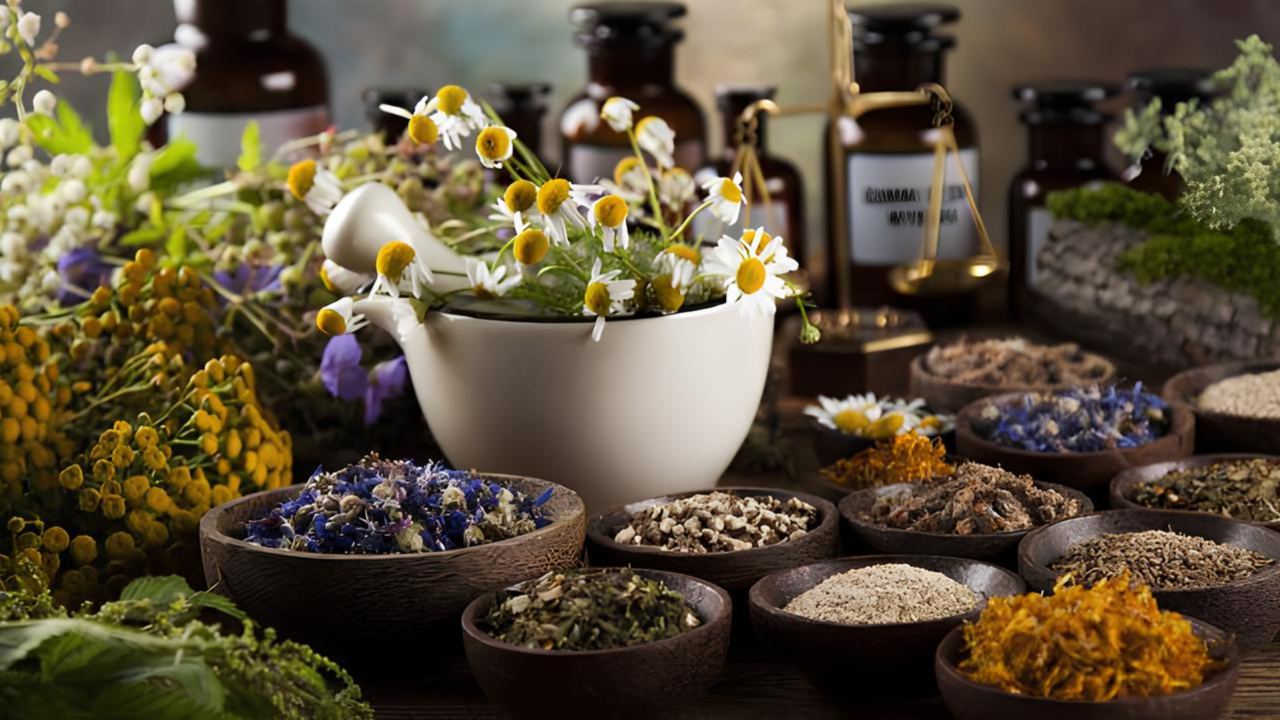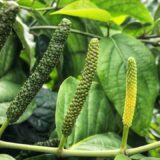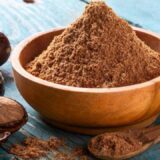The Top 15 Medicinal Plants and How They Benefit Your Health
In Ayurveda, the ancient system of medicine that originated in India leaves play a crucial role due to their potent medicinal properties and diverse therapeutic applications. Ayurvedic practitioners have long recognized the power of nature’s green remedies, utilizing various leaves to treat a wide array of health conditions.
These leaves are celebrated for their ability to balance the body’s energies, support digestion, enhance immunity, and promote overall wellness. From the revered tulsi to the versatile neem, each leaf is valued for its unique benefits, and their use forms an integral part of holistic healing practices.
Top 15 Medicinal Plant Leaves and Its Uses
A guide to the Top 10 medicinal plant leaves. Each leaf in this list offers unique benefits, blending ancient wisdom with modern wellness practices.
Whether you’re seeking natural remedies or simply curious about the plants that have shaped traditional medicine, explore how these medicinal leaves can enhance your health and well-being.
This list explores some of the key medicinal leaves in Ayurveda, highlighting their traditional uses and health benefits.
1. Neem (Azadirachta indica)
Neem leaves are renowned for their powerful antimicrobial, anti-inflammatory, and antidiabetic properties. They have been traditionally used to treat skin conditions, such as acne and eczema, due to their antibacterial qualities.
Neem also supports immune function and has been utilized in managing blood sugar levels. Often incorporated into herbal teas or topical treatments, neem is a versatile plant with numerous health benefits.
However, it should be used with caution, especially in high doses.
How To Use Neem (Azadirachta indica)
- Tea: Steep neem leaves in hot water for 10-15 minutes. Drink once daily to support immune health and detoxify.
- Topical: Crush fresh neem leaves and apply to the skin to treat acne or other skin conditions.
- Extracts: Neem oil or tinctures can be used as supplements or applied topically for various ailments.
2. Mint (Mentha spp.)
Mint leaves are widely used for their soothing and digestive benefits. They help alleviate digestive issues like indigestion, bloating, and gas, and can also provide relief from nausea and headaches.
Mint has mild antimicrobial properties that aid in oral hygiene, and its menthol content can help clear nasal congestion.
Whether used fresh in cooking, as a tea, or in essential oil form, mint is a refreshing herb with various therapeutic applications.
How To Use Mint (Mentha spp.)
- Tea: Steep fresh or dried mint leaves in hot water for 5-10 minutes. Drink to relieve digestive issues and headaches.
- Culinary: Add fresh mint leaves to salads, smoothies, or desserts for flavor and digestive benefits.
- Essential Oil: Use a few drops in a diffuser or dilute with a carrier oil for respiratory relief.
3. Tulsi (Ocimum sanctum)
Tulsi, or holy basil, is revered in Ayurvedic medicine for its adaptogenic properties, which help the body manage stress and maintain balance.
The leaves possess anti-inflammatory, antioxidant, and antimicrobial qualities that support overall health. Tulsi is commonly used to boost the immune system, improve respiratory health, and enhance mental clarity.
Consumed as tea, in supplements, or used in topical applications, tulsi is a versatile herb with a rich tradition of medicinal use.
How To Use Tulsi (Ocimum sanctum)
- Tea: Brew fresh or dried tulsi leaves in hot water for 10 minutes. Drink daily to enhance immunity and reduce stress.
- Supplements: Tulsi extracts or capsules can be taken according to dosage instructions for various health benefits.
- Topical: Apply tulsi leaf paste to the skin to treat minor wounds or infections.
4. Eucalyptus (Eucalyptus globulus)
Eucalyptus leaves are prized for their expectorant and antimicrobial properties, making them valuable for treating respiratory conditions like coughs and colds.
The primary compound, eucalyptol, helps clear mucus from the airways and provides relief from congestion. Eucalyptus oil, derived from the leaves, is often used in steam inhalations or as a component in chest rubs.
It also has antiseptic properties and can aid in soothing sore muscles when used topically.
How To Use Eucalyptus (Eucalyptus globulus)
- Steam Inhalation: Add a few drops of eucalyptus oil to a bowl of hot water and inhale the steam to relieve respiratory congestion.
- Chest Rub: Dilute eucalyptus oil with a carrier oil and apply to the chest to ease cough and muscle soreness.
- Tea: Brew eucalyptus leaves (use sparingly) for its expectorant properties.
5. Ginger (Zingiber officinale)
Ginger leaves, while less commonly used than the root, offer significant medicinal benefits. They are known for their anti-inflammatory and digestive properties, helping to soothe nausea, aid digestion, and reduce bloating.
Ginger is also used to alleviate pain and improve circulation. Often brewed into a tea or used in culinary dishes, ginger leaves provide a mild yet effective remedy for a range of digestive and inflammatory issues.
How To Use Ginger (Zingiber officinale):
- Tea: Boil fresh ginger leaves or root slices in water for 10 minutes. Drink to help with digestion and nausea.
- Culinary: Incorporate fresh ginger leaves or root into soups, stews, and stir-fries for flavor and health benefits.
- Extracts: Ginger tinctures or supplements can be used according to dosage recommendations.
6. Ginseng (Panax ginseng)
Ginseng leaves are valued for their adaptogenic properties, which help the body adapt to stress and enhance overall vitality.
They are believed to support cognitive function, boost energy levels, and improve physical endurance. Ginseng also has immune-boosting effects and can aid in reducing fatigue.
Typically consumed in tea, capsules, or tinctures, ginseng leaves offer a natural way to enhance resilience and promote overall well-being.
How To Use Ginseng (Panax ginseng)
- Tea: Steep ginseng leaves or root slices in hot water for 10-15 minutes. Drink to boost energy and reduce stress.
- Supplements: Ginseng extracts or capsules are available for energy and cognitive support. Follow dosage instructions.
- Tinctures: Ginseng tinctures can be used for additional health benefits; consult with a healthcare provider for proper use.
7. Sage (Salvia officinalis)
Sage leaves are renowned for their antimicrobial and anti-inflammatory effects. They have been used traditionally to treat sore throats, and digestive issues, and to support overall respiratory health.
Sage’s antioxidant properties also contribute to reducing oxidative stress in the body. Often used in teas, tinctures, or as a culinary herb, sage can provide relief from various ailments and enhance general health through its soothing and protective qualities.
How To Use Sage (Salvia officinalis)
- Tea: Brew fresh or dried sage leaves in hot water for 5-10 minutes. Drink to aid digestion and soothe sore throats.
- Culinary: Use sage leaves in cooking, especially in meat dishes and stuffing, for their flavor and health benefits.
- Essential Oil: Use diluted sage essential oil in aromatherapy to support mental clarity and relaxation.
8. Bay Leaf (Laurus nobilis)
Bay leaves are commonly used for their aromatic qualities in cooking, but they also have medicinal benefits. They are known for their digestive aids, helping to alleviate symptoms of indigestion and bloating.
Bay leaves contain essential oils with anti-inflammatory and antioxidant properties. When used in teas or as part of a culinary dish, bay leaves can provide a flavorful way to support digestion and overall health.
How To Use Bay Leaf (Laurus nobilis)
- Culinary: Add whole bay leaves to soups, stews, and braises for flavor. Remove before serving.
- Tea: Brew dried bay leaves in hot water for a few minutes to aid digestion.
- Essential Oil: Use a few drops of bay leaf oil in a diffuser for its soothing and antimicrobial properties.
9. Dandelion (Taraxacum officinale)
Dandelion leaves are a rich source of vitamins and minerals, including vitamins A, C, and K, and are known for their diuretic and liver-supporting properties.
They are traditionally used to aid in digestion, promote detoxification, and support kidney function. Often consumed in salads, teas, or supplements, dandelion leaves offer a natural way to support overall health and detoxify the body.
How To Use Dandelion (Taraxacum officinale)
- Tea: Steep fresh or dried dandelion leaves in hot water for 10 minutes. Drink to support liver function and digestion.
- Salads: Add fresh dandelion leaves to salads for a nutrient boost and digestive aid.
- Supplements: Dandelion root or leaf capsules can be taken according to dosage instructions for liver support.
10. Moringa (Moringa oleifera)
Moringa leaves are highly nutritious, and packed with vitamins, minerals, and antioxidants. They are renowned for their anti-inflammatory, antioxidant, and antimicrobial properties.
Moringa is used to boost the immune system, improve energy levels, and support healthy digestion. The leaves can be consumed fresh, powdered, or in supplements, making them a versatile and beneficial addition to a balanced diet for overall health.
How To Use Moringa (Moringa oleifera)
- Tea: Brew moringa leaves in hot water for 5-10 minutes. Drink daily for its nutritional and anti-inflammatory benefits.
- Powder: Add moringa leaf powder to smoothies, soups, or salads for a nutrient boost.
- Supplements: Moringa capsules or tablets are available for convenience and should be taken as directed.
11. Coriander (Coriandrum sativum)
Coriander leaves, also known as cilantro, offer a range of health benefits due to their antioxidant and anti-inflammatory properties.
They help support digestive health, alleviate nausea, and may assist in managing blood sugar levels. Coriander leaves are commonly used in culinary dishes for their fresh flavor and can also be consumed in teas or supplements to harness their therapeutic effects.
How To Use Coriander (Coriandrum sativum):
- Tea: Brew fresh or dried coriander leaves in hot water for 5-10 minutes. Drink to aid digestion and support overall health.
- Culinary: Use fresh coriander leaves (cilantro) in salads, salsas, and as a garnish to enhance flavor and health benefits.
- Seeds: Coriander seeds can be brewed into tea or used in cooking for their digestive properties.
12. Basil (Ocimum basilicum)
Basil leaves are celebrated for their anti-inflammatory, antimicrobial, and antioxidant properties. They are used to support digestion, reduce stress, and enhance overall well-being.
Basil is often consumed fresh in salads, as a culinary herb, or brewed into a tea. Its essential oils are also used in aromatherapy for relaxation and mental clarity. Basil’s versatile applications make it a valuable herb for promoting health.
How To Use Basil (Ocimum basilicum):
- Tea: Steep fresh or dried basil leaves in hot water for 5-10 minutes. Drink to help reduce stress and support digestion.
- Culinary: Use fresh basil leaves in salads, pasta dishes, and sauces for flavor and health benefits.
- Essential Oil: Dilute basil essential oil with carrier oil and apply it topically or use it in a diffuser for its therapeutic effects.
13. Elderberry (Sambucus nigra)
Elderberry leaves, though less commonly used than berries, offer antiviral and anti-inflammatory properties. They are sometimes used to support immune function and treat respiratory issues.
Elderberry leaves can be brewed into teas or used in extracts, though caution is needed as they can be toxic if not prepared properly. The berries are more commonly used and known for their effectiveness in managing cold and flu symptoms.
How To Use Elderberry (Sambucus nigra):
- Tea: Brew elderberry leaves (sparingly) or berries in hot water for 10 minutes to support immune health.
- Syrup: Elderberry syrup made from the berries is popular for cold and flu relief.
- Supplements: Elderberry capsules or tinctures can be taken according to dosage recommendations for immune support.
14. Hibiscus (Hibiscus sabdariffa)
Hibiscus leaves are known for their rich antioxidant content and potential health benefits. They are often used to make herbal teas that support cardiovascular health, help regulate blood pressure, and improve digestion.
Hibiscus has diuretic properties and can also aid in reducing inflammation. Consumed as tea or in supplements, hibiscus leaves provide a refreshing way to support overall wellness.
How To Use Hibiscus (Hibiscus sabdariffa):
- Tea: Steep dried hibiscus flowers in hot water for 5-10 minutes. Drink to support cardiovascular health and lower blood pressure.
- Culinary: Use hibiscus petals in salads, desserts, or as a garnish for their vibrant color and health benefits.
- Extracts: Hibiscus extracts can be used in supplements for additional health benefits.
15. Thyme (Thymus vulgaris)
Thyme leaves are valued for their antimicrobial, expectorant, and antioxidant properties. They are used to treat respiratory issues like coughs and bronchitis, support digestive health, and alleviate inflammation.
Thyme can be used in cooking, brewed into tea, or applied topically in essential oil form. Its versatile uses make it a beneficial herb for various health concerns and for enhancing overall wellness.
How To Use Thyme (Thymus vulgaris):
- Tea: Brew fresh or dried thyme leaves in hot water for 5-10 minutes. Drink to relieve coughs and support respiratory health.
- Culinary: Use thyme leaves in cooking, particularly in soups, stews, and roasted dishes, for their flavor and medicinal benefits.
- Essential Oil: Dilute thyme essential oil with a carrier oil for topical application or use in a diffuser for respiratory relief.

























